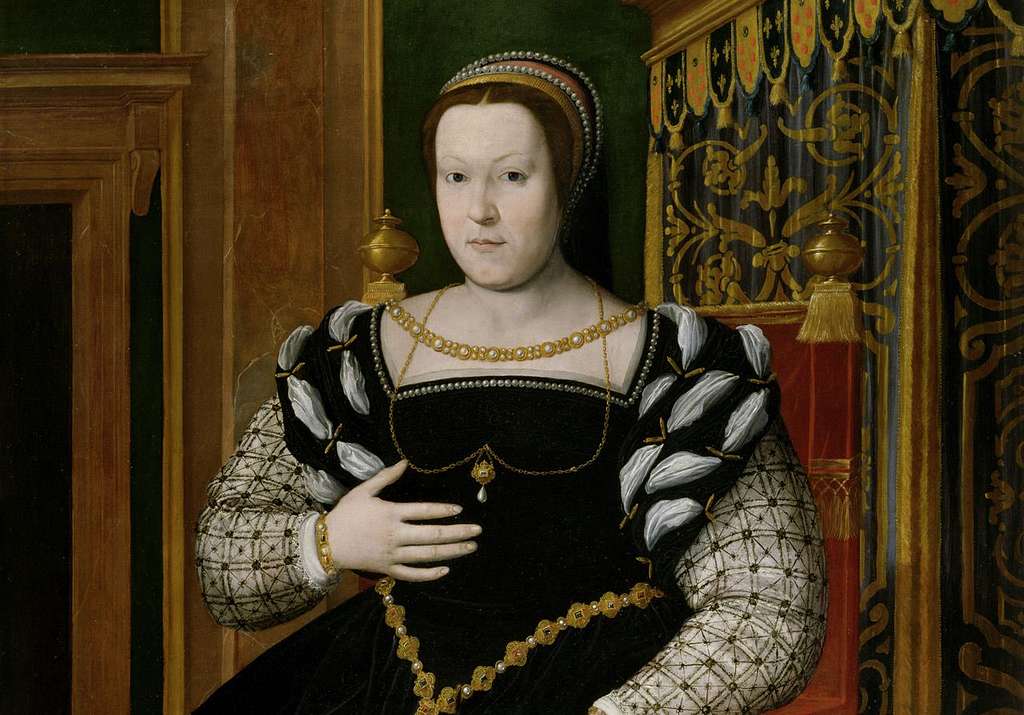Born on 13 April 1519 in Florence, Catherine de’ Medici was one of the illustrious Medici family. The Florentine dynasty was renowned for its patronage of the arts and influence in Renaissance Italy. She became one of the most powerful women in Europe, mother of three French kings.
Catherine de Medici’s father was Lorenzo II de’ Medici, Duke of Urbino. He was the grandson of Lorenzo the Magnificent, a pivotal figure in Florentine history. Her mother, Madeleine de La Tour d’Auvergne, hailed from French nobility. Catherine’s parents both died within weeks of her birth. Catherine was subsequently raised under the guardianship of her relative, Pope Clement VII.
At the age of 14, Catherine married Henry, Duke of Orléans, the future King Henry II of France. Their union produced ten children, three of whom – Francis II, Charles IX, and Henry III – ascended to the French throne. Catherine’s role as queen consort and later as queen mother placed her at the epicentre of French politics during a tumultuous era marked by religious wars between Catholics and Huguenots.
Following Henry II’s death in 1559, Catherine wielded significant influence as regent for her young sons. Her political acumen was evident as she navigated the complexities of court intrigues and sought to maintain the Valois dynasty’s stability. However, events such as the St. Bartholomew’s Day Massacre in 1572 mar her legacy. Thousands of Huguenots were killed, a decision that has led historians to debate her motivations and the extent of her involvement.
Influence on French culture
Beyond her political endeavours, Catherine was a patron of the arts and architecture, commissioning projects that left a lasting imprint on French culture. She introduced Italian culinary and cultural influences to the French court, bridging Renaissance Italy and France.
Catherine de’ Medici passed away on 5 January 1589 at the Château de Blois. Her descendants continued to shape European history, with her lineage extending to monarchs such as Henry IV of France and Louis XIII.





